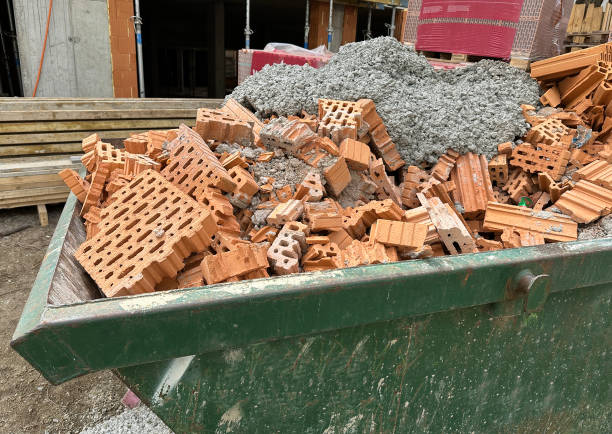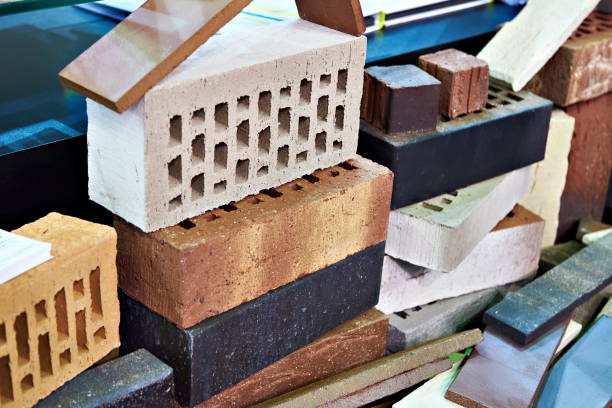The construction industry is one of the most resource-intensive sectors at the heart of global sustainability efforts. In response to the growing demand for eco-friendly building solutions, the use of recycled materials in construction has emerged as a vital strategy.
Recycled materials offer a promising approach to reducing waste, conserving resources, and creating a more sustainable built environment. However, like any approach, it has its merits and limitations.
This article comprehensively explores the advantages and disadvantages of using recycled materials in construction. From environmental and economic benefits to challenges like quality control and regulatory compliance, it aims to give architects, builders, and stakeholders the knowledge they need to make informed decisions about incorporating recycled materials into construction projects.

Environmental Benefits of Recycled Materials in Construction
1. Reduction in Resource Depletion
- One significant environmental benefit of using recycled materials is conserving natural resources. Repurposing materials such as wood, metal, and concrete helps to conserve forests, reduce mining operations, and protect biodiversity by cutting the need for new resources.
2. Waste Diversion from Landfills
- Construction and demolition activities generate vast amounts of waste that often end up in landfills. By recycling materials like glass, metal, and concrete, the industry can significantly reduce the volume of waste being disposed of, thus extending the lifespan of landfills and reducing pollution.
3. Reduction in Greenhouse Gas Emissions
- Raw construction materials’ extraction, production, and transportation contribute to greenhouse gas emissions. Recycled materials typically require less energy to process, lowering carbon emissions. For instance, producing recycled steel uses less energy than manufacturing new steel from iron ore.
4. Energy Conservation
- Using recycled materials reduces the need for energy-intensive manufacturing processes. Recycling aluminium, for instance, saves approximately 95% of the energy needed to create new aluminium from raw bauxite, enhancing the sustainability of the construction process.
Economic Advantages of Using Recycled Materials
1. Cost Reduction
- Recycled materials are often cheaper than new materials, leading to significant cost savings in construction projects. For example, using reclaimed wood or recycled concrete is less expensive than sourcing virgin materials.
2. Lower Transportation Costs
- Using locally sourced recycled materials reduces the need for long-distance transportation. This minimizes shipping costs and reduces the associated fuel consumption and emissions.
3. Increased Market Competitiveness
- Companies that adopt sustainable practices, such as using recycled materials, often attract eco-conscious clients. This can enhance a company’s brand image, attract new customers, and open up new business opportunities in the growing market for green buildings.
Energy Efficiency in Buildings Using Recycled Materials
1. Improved Thermal Insulation
- Recycled materials like cellulose insulation (made from recycled paper) and recycled denim offer excellent thermal insulation properties. These materials improve energy efficiency in buildings by reducing the need for heating and cooling, thereby lowering energy bills.
2. Sustainable Building Design
- Recycled materials can be used to create energy-efficient building designs. For instance, recycled glass can be used for energy-efficient windows, while recycled concrete can contribute to better thermal mass, stabilizing indoor temperatures and reducing heating and cooling demands.
Aesthetic and Design Potential of Recycled Materials
1. Unique Visual Appeal
- Recycled materials introduce character and uniqueness to construction projects. Reclaimed wood, for example, offers rustic charm and aesthetic appeal that is difficult to replicate with new materials. Salvaged bricks and tiles can also be used to create unique patterns and textures.
2. Innovative Design Possibilities
- Architects and designers are increasingly embracing recycled materials to achieve creative and modern designs. From accent walls made of recycled wood to stunning mosaics crafted from recycled glass, the aesthetic potential of recycled materials is vast.
Durability and Strength of Recycled Materials
1. Structural Integrity
- Many recycled materials, such as steel and concrete, maintain their structural integrity and strength. In some cases, they may even perform better than their virgin counterparts. For example, recycled steel maintains its original strength and flexibility.
2. Longevity of Materials
- Recycled materials can have comparable or superior longevity compared to new materials. For instance, recycled concrete can be as durable as newly produced concrete when properly processed and mixed.
Health and Safety Concerns Associated with Recycled Materials
1. Potential Exposure to Toxins
- Some recycled materials, especially older ones, may contain hazardous substances like asbestos, lead, or volatile organic compounds (VOCs). Testing recycled materials for such contaminants is crucial to ensure they meet safety standards.
2. Mitigating Health Risks
- Construction firms can ensure that recycled materials are safe by conducting proper testing, certification, and quality control. Adhering to health and safety guidelines helps protect workers and future occupants from potential exposure to hazardous substances.
Challenges in Sourcing and Quality Control of Recycled Materials
1. Inconsistencies in Material Quality
- The quality of recycled materials can vary due to their source, condition, and processing differences. This inconsistency makes it essential to implement rigorous quality checks and testing protocols.
2. Availability and Supply Chain Issues
- The availability of recycled materials may vary depending on the region and local recycling infrastructure. Areas with limited recycling facilities may struggle to source a consistent supply of high-quality materials.
Regulatory and Code Compliance for Recycled Materials
1. Building Codes and Standards
- Construction projects that use recycled materials must comply with local building codes and standards. This ensures that recycled materials meet the required strength, safety, and performance criteria.
2. Certification and Accreditation
- Some countries and regions have established certification programs for recycled materials. Materials that meet certain environmental and safety standards may receive certifications like LEED (Leadership in Energy and Environmental Design) credits, which can enhance the reputation of construction projects.

Conclusion
Using recycled materials in construction represents a significant step toward achieving a more sustainable and environmentally responsible industry. The benefits are compelling, from conserving natural resources and reducing waste to lowering energy consumption and cutting costs. However, the construction sector must also navigate challenges like material availability, quality control, and regulatory compliance.
Recycled materials offer unique opportunities for creative design, energy efficiency, and cost savings. However, careful planning, testing, and adherence to safety standards are essential to mitigate potential risks. As technology advances and recycling infrastructure improves, the availability and quality of recycled materials will likely increase, making them an even more viable option for sustainable construction.
By embracing recycled materials, construction firms can lead the way toward a future where buildings are functional, beautiful, sustainable, and environmentally friendly. The industry’s growing commitment to sustainability is a testament to the positive change that can be achieved when businesses, governments, and communities work together to build a greener future.

